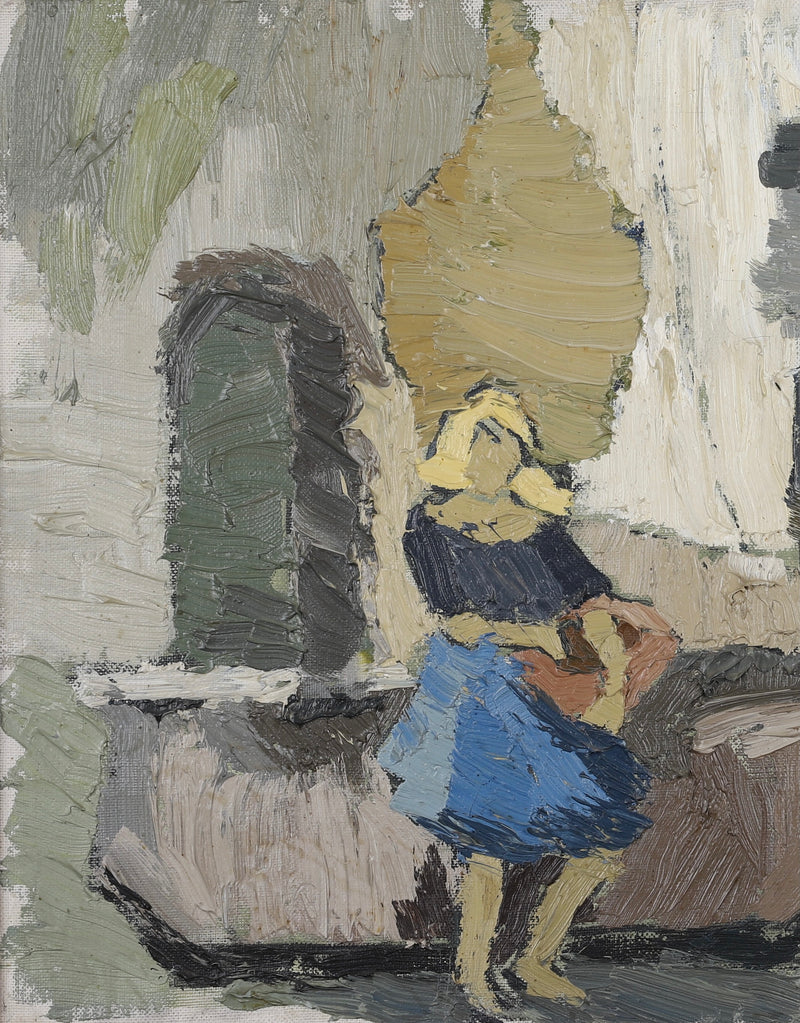Understanding Composition and Color in Figurative Oil Painting
Understanding Composition and Color in Figurative Oil Painting
Blog Article
The Function of Feeling and Expression in Metaphorical Oil Paint: A Comprehensive Evaluation of Topic and Composition
The interplay of emotion and expression in metaphorical oil painting offers as an important lens via which one can check out the elaborate relationship in between subject issue and make-up. Artists harness different strategies, from shade option to brushstroke dynamics, to grow psychological resonance within their works.
Understanding Feeling in Art
Emotion in art functions as an effective channel for expression, permitting artists to communicate intricate feelings with their job. In figurative oil painting, this emotional deepness is typically represented through the depiction of the human number, catching the subtleties of human experience. The choice of subject, shade combination, and brushwork all add to the psychological resonance of a piece.
Artists regularly draw upon individual experiences, social concerns, or global styles to evoke feelings in the audience. A picture may reflect susceptability, while a dynamic figure in activity can symbolize freedom or turmoil. These emotional threads link the customer to the art work, promoting a discussion that goes beyond the visual medium.
Furthermore, the interplay in between light and shadow can magnify psychological strength, directing the visitor's stare and accentuating particular components within the make-up. The use of structure in oil painting better adds layers of complexity, inviting a responsive reaction that boosts the emotional experience. Generally, comprehending emotion in art is critical for valuing the subtleties that identify figurative oil painting, as it transforms mere depiction right into a profound exploration of the human problem.
Crucial Element of Make-up
In the world of figurative oil paint, the structure serves as the underlying structure that arranges aesthetic elements and enhances the psychological narrative. Vital components of make-up consist of equilibrium, contrast, centerpiece, and rhythm, each adding to the general effect of the artwork.
Balance describes the distribution of aesthetic weight within the painting, which can be attained with unbalanced or in proportion plans. A healthy structure provides stability, enabling the viewer to involve with the piece sympathetically - figurative oil painting. Comparison, on the various other hand, involves comparing different components, such as dark and light or warm and awesome shades, to guide the viewer's eye and stimulate emotional feedbacks
The focal factor is important, as it routes focus to the most substantial part of the painting, typically highlighting the psychological core of the story. By masterfully incorporating these key aspects, artists can craft engaging and psychologically powerful figurative oil paintings that captivate and engage their audience.
Topic and Its Influence
Topic plays a pivotal role in figurative oil paint, as it not just acts as the structure for the story yet additionally forms the viewer's analysis and emotional engagement with the art work. The choice of subject-- be it a singular figure, a group dynamic, or a thematic depiction-- straight influences the psychological environment communicated to the audience.

For circumstances, portraits frequently stimulate individual connections, revealing the intricacies of human expression and personality, while scenes portraying public activities can create a feeling of belonging or nostalgia. In addition, the historical and social context of the subject improves the audience's understanding, motivating much deeper reflections on social norms, values, and the human problem.
Various subject matters also create differing degrees of engagement; a remarkable problem depicted with numbers in tension may elicit feelings of stress and anxiety or compassion, while serene landscapes can conjure up serenity and reflection. Ultimately, the effect of topic in metaphorical oil paint is extensive, as it works as a channel for psychological resonance, leading the viewer's reaction and analysis, and promoting a connection between the observer and the art work. This interplay is necessary for the successful communication of the artist's intent.
Techniques for Evoking Feelings
The efficiency of metaphorical oil paint in conveying emotions is substantially affected by the strategies employed by the musician. One of the most important methods is the use of shade concept, where the strategic selection of shades can stimulate certain psychological actions. Cozy shades, such as reds and oranges, commonly generate sensations of passion or aggressiveness, while cooler tones like blues and eco-friendlies tend to evoke calmness or sadness.
One more vital method is the control of light and darkness, understood as chiaroscuro. This method boosts the three-dimensionality of figures, developing remarkable contrasts that can escalate psychological deepness. The placement of light can guide customers' feelings, highlighting particular elements of the make-up.
Brushwork additionally plays an important function; loose, expressive strokes can share energy and spontaneity, whereas smoother methods may suggest tranquility or accuracy. The setup of topics within the structure can influence psychological effect. Close distance can recommend affection, while range might suggest seclusion.
Ultimately, the combination of these strategies allows musicians to craft narratives that reverberate with the audience, transforming a simple aesthetic experience into an expressive emotional journey. - figurative oil painting

Study of Significant Functions
Taking a look at remarkable works of figurative oil paint exposes just how numerous strategies are used to evoke effective feelings. One excellent case is Edvard Munch's "The Scream," where the altered figure and swirling history share existential dread. Munch's use color-- deep blues and brilliant oranges-- intensifies the emotional effect, showcasing just how combination options can form visitor experience.
Another considerable work is Pablo Picasso's "Les Demoiselles d'Avignon." Here, fragmented types and strong brushstrokes mirror a turbulent psychological landscape, testing typical representations of the female number. Picasso's cutting-edge make-up not just captures the visitor's attention but additionally invites reflection on themes of identity and sexuality.
Additionally, Frida Kahlo's "Both Fridas" uses an emotional expedition of duality and self-identity. The contrasting figures, connected by a common heart, exemplify Kahlo's emotional deepness and individual narrative. figurative oil painting. Her thorough focus to information and symbolic aspects serve to involve visitors on a natural level
These study highlight the extensive link between emotion and make-up in figurative oil paint, exposing how musicians harness method to communicate complicated feelings and narratives that reverberate across time and important source society.

Conclusion
Finally, the interplay of feeling and expression in figurative oil paint considerably boosts the audience's experience and analysis of the art work. Via a careful option of topic and compositional strategies, artists convey extensive stories that resonate on both individual and global degrees. The application of additional hints shade theory, brushwork, and chiaroscuro additional enhances emotional depth, changing each canvas into an effective representation of the complexities of the human experience.
In figurative oil painting, this psychological depth is often portrayed with the representation of the human number, capturing the subtleties of human experience.Moreover, the interplay between light and shadow can magnify psychological intensity, assisting the visitor's gaze and drawing attention to specific components within the composition. The use of texture in oil painting even more includes layers of intricacy, welcoming a responsive feedback that boosts the psychological experience.The focal factor is crucial, as it directs attention to the most considerable part of the painting, usually highlighting the psychological core of the story. Inevitably, the influence of subject issue in metaphorical oil painting is extensive, as it offers as an avenue for psychological vibration, guiding the customer's action and interpretation, and promoting a connection in between the art anonymous work and the viewer.
Report this page